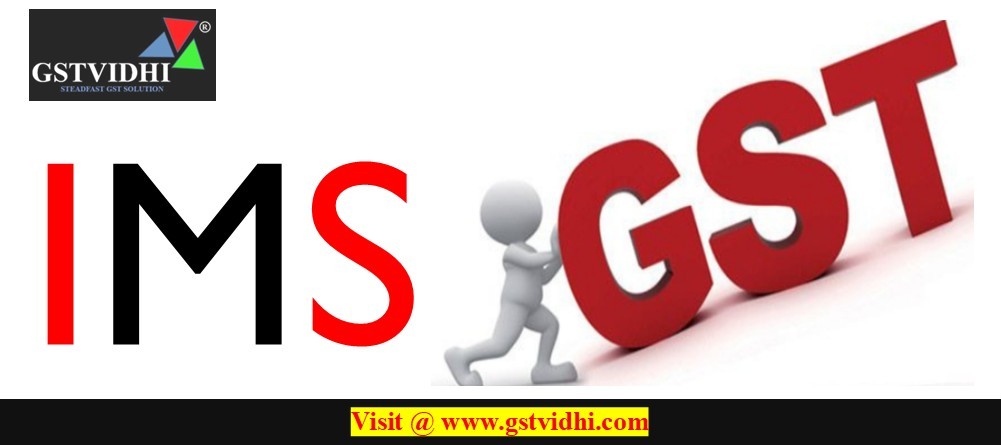
Handling Inadvertently Rejected Invoices on IMS: A Practical
Guide
With the introduction of
the Invoice Matching System (IMS), the Government has enhanced
transparency and accuracy in GST credit claims. However, mistakes such as inadvertently
rejecting valid invoices, debit notes, or credit notes in IMS are not
uncommon, especially when GSTR-3B has already been filed. Taxpayers often seek
clarification on how to correct these errors, avail rightful ITC, or reverse
wrongly claimed credits.
This article offers a
step-by-step guide on how recipients and suppliers can handle such
situations effectively, ensuring compliance while minimizing tax implications.
Scenario 1:
ITC Not Availed Due to Rejected Invoices/DNs on IMS
Issue:
Recipient has wrongly
rejected invoices, debit notes, or ECO-documents on IMS. Corresponding GSTR-3B
has already been filed.
Solution:
The recipient
should request the supplier to re-report the same record
(unchanged) in:
- GSTR-1A
of the same tax period, or
- Amendment Table
of subsequent GSTR-1/IFF, before the time limit under Section
16(4).
Once the supplier does
this:
1. Recipient
accepts the amended record on IMS.
2. Recomputes
GSTR-2B on IMS.
3. Avails
ITC on the amended (now accepted) record in GSTR-2B.
Result:
Recipient becomes
eligible to avail the full ITC on the invoice that was earlier rejected. ITC
reflects in GSTR-2B of the tax period where the amendment was accepted.
Scenario 2:
Supplier Re-Furnishes a Record Already Rejected by Recipient
Issue:
Supplier had originally
reported the invoice/CN/DN correctly, but the recipient rejected it wrongly
on IMS.
Solution:
Supplier may now
re-furnish the same record (unchanged):
- Through GSTR-1A (same period),
or
- Amendment Table
of GSTR-1/IFF of a later period (within permissible time).
Impact on Supplier’s
Liability:
There is no increase
in supplier’s liability, because:
- The amendment table only
considers delta value (difference).
- As the same values are being
re-reported (no change), net additional liability = 0.
Scenario 3:
Reversal of ITC Due to Rejected Credit Note
Issue:
Recipient had earlier
accepted ITC based on a Credit Note, which was wrongly rejected
on IMS after GSTR-3B filing.
Solution:
Recipient should:
1. Ask
the supplier to re-report the same CN in:
o GSTR-1A
of same period, or
o Amendment
Table of subsequent GSTR-1/IFF.
2. Accept
the CN on IMS.
3. Recompute
GSTR-2B on IMS.
4. Reverse
the ITC availed earlier based on the accepted amended CN.
Result:
The recipient’s ITC will
be reduced by the value of the original CN upon recomputing GSTR-2B.
This aligns the ITC with correct liability.
Scenario 4:
Supplier Furnishes Rejected CN in Future Period
Issue:
Recipient rejects a Credit
Note (CN). Supplier re-reports the same CN (unchanged) in a later
return (GSTR-1A or Amendment Table).
Impact on
Supplier:
1. At
first, due to rejection of CN, supplier’s liability increases (credit
not passed).
2. Once
CN is furnished again via amendment or GSTR-1A, supplier’s liability reduces
accordingly.
3. Since
the CN value remains unchanged, the net impact occurs only once.
Timelines
and Legal Backing
|
Action
|
Deadline
|
|
Amendment
to GSTR-1/IFF
|
Till
30th November following the end of financial year (or earlier if
GSTR-9 is filed)
|
|
ITC
Claim by Recipient
|
As
per Section 16(4) – earlier of 30th November of following FY or
GSTR-9 filing
|
Practical
Example
M/s ABC Ltd.
received an invoice from M/s XYZ Traders dated April 10, 2024,
for ₹1,00,000 + ₹18,000 GST.
ABC Ltd. accidentally rejected this invoice on IMS while reviewing and
filed its April GSTR-3B without claiming this ITC.
How to Fix
It:
1. ABC
Ltd. asks XYZ to re-upload the same invoice in:
o GSTR-1A
for April, or
o Amendment
Table of GSTR-1 for May or June.
2. ABC
Ltd. then:
o Accepts
the record in IMS.
o Recomputes
GSTR-2B.
o Claims
ITC
in the period when recomputed GSTR-2B reflects the invoice.
Since XYZ re-uploaded the
invoice unchanged, their liability doesn’t change.
Common
Mistakes to Avoid
- Don’t modify
the invoice values during re-filing by the supplier. This may create unmatched
data.
- Ensure supplier doesn’t reissue
new invoice numbers—use same invoice reference.
- Communicate clearly
between supplier and recipient for smooth coordination.
- Don’t delay corrections beyond 30th
November of following FY.
Summary
Checklist
|
Task
|
Responsible
Party
|
Tool
|
|
Identify
wrongly rejected records
|
Recipient
|
IMS
Dashboard
|
|
Request
re-reporting of records
|
Recipient
|
Communication
with Supplier
|
|
Re-upload
record without changes
|
Supplier
|
GSTR-1A
/ Amendment Table
|
|
Accept
and recompute GSTR-2B
|
Recipient
|
IMS
|
|
Avail/Reversal
of ITC
|
Recipient
|
GSTR-3B
|
Conclusion
IMS is a powerful tool
for ensuring ITC transparency, but even the most compliant businesses may face
hiccups like wrongly rejected documents. Fortunately, the GSTN framework
supports corrections through proper amendment and acceptance workflows.
By promptly coordinating
with suppliers and leveraging GSTR-1A or amendment tables, taxpayers can claim
rightful ITC or reverse wrong credits with no additional liability
impact on the supplier.
Disclaimer: All the Information is based on the notification, circular advisory and order issued by the Govt. authority and judgement delivered by the court or the authority information is strictly for educational purposes and on the basis of our best understanding of laws & not binding on anyone.
Find the Attachment (Press on Click Here )
Click here